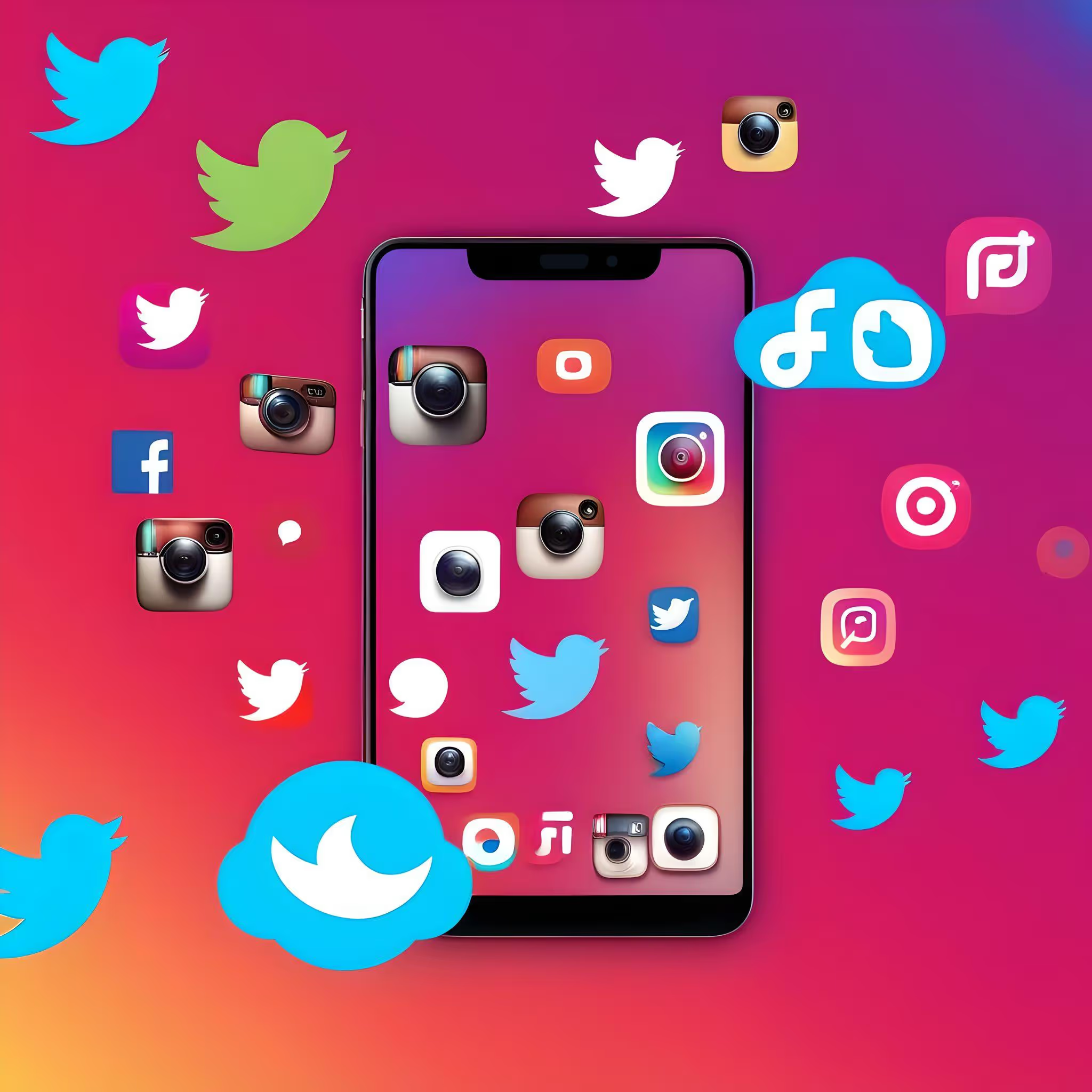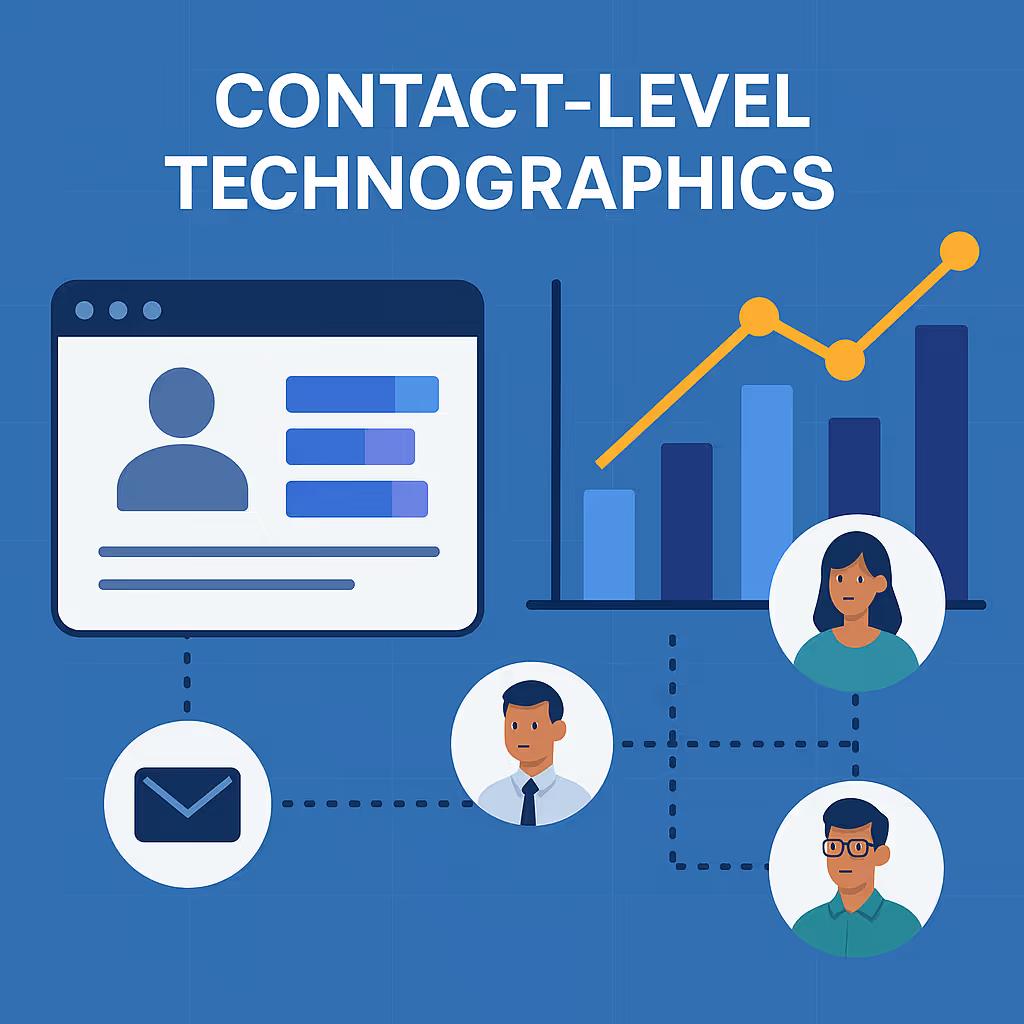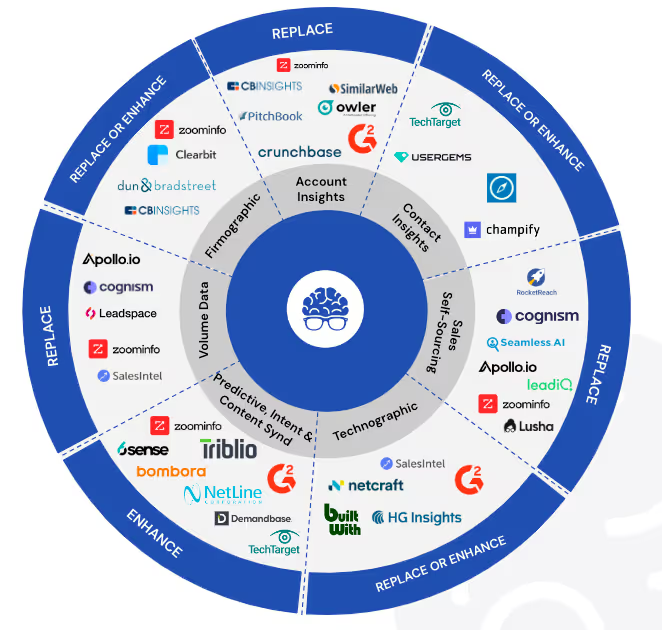What is Social Monitoring and Why is it Important When Selling and Marketing to Brands?
Maybe the most impactful technological change of the last 20 years is the advent of social media. The landscape of marketing and sales has certainly dramatically shifted with the creation of Linkedin and Facebook. Traditional methods of outreach and engagement are increasingly complemented, if not replaced, by data-driven strategies. One of the most powerful tools in this arsenal is social monitoring. But what exactly is social monitoring, and why is it so critical for digital marketers, sales teams, account-based marketing (ABM) teams, and business development professionals?
Understanding Social Monitoring
Social monitoring, often referred to as social listening, involves tracking and analyzing conversations, mentions, and sentiments about a brand, its competitors, or relevant industry topics across various social media platforms. This process leverages sophisticated tools and technologies to gather real-time data from social media channels such as Twitter (now X), LinkedIn, Facebook, Instagram, TikTok, Pinterest, and more.
Why Social Monitoring Matters
For Digital Marketers
Digital marketers are at the forefront of creating and executing strategies that resonate with their target audience. Social monitoring provides invaluable insights into customer preferences, pain points, and trends. By analyzing social media chatter, marketers can tailor their campaigns to address the specific needs and interests of their audience, leading to higher engagement and conversion rates.
For example, a digital marketer for a tech company might use social monitoring to track conversations about emerging technologies. If they notice a surge in discussions about artificial intelligence, they can pivot their content strategy to highlight their AI capabilities, positioning their brand as a leader in this space.
For Sales Teams
Sales teams can significantly benefit from social monitoring by identifying potential leads and understanding their behavior and interests. By tracking mentions and conversations, sales professionals can gain insights into a prospect's needs and pain points, enabling more personalized and effective outreach.
Consider a sales representative for a SaaS company. By monitoring social media, they discover that a prospect has been actively discussing their struggles with data management. This information allows the sales rep to tailor their pitch, highlighting how their solution addresses these specific challenges, thereby increasing the likelihood of a successful sale.
For Account-Based Marketing (ABM) Teams
ABM teams focus on targeting high-value accounts with personalized campaigns. Social monitoring allows these teams to gather detailed information about their target accounts, including key decision-makers' interests, recent activities, and organizational changes.
For instance, an ABM team targeting a large retail company might use social monitoring to track the company's announcements and initiatives. If they notice the company is expanding its e-commerce capabilities, the ABM team can tailor their outreach to showcase how their solutions can support this expansion, making their pitch more relevant and compelling.
For Business Development Professionals
Business development professionals are always on the lookout for new opportunities and partnerships. Social monitoring helps them stay informed about industry trends, competitor activities, and potential partners' interests.
Imagine a business development manager for a logistics company. By monitoring social media, they identify that a leading e-commerce company is looking for more efficient delivery solutions. Armed with this insight, the manager can proactively approach the e-commerce company with a tailored proposal, positioning their company as the ideal partner.
Practical Examples of Social Monitoring
Tracking Follower Growth
One of the practical applications of social monitoring is tracking a prospect's follower growth. A sudden increase in followers might indicate a successful campaign, product launch, or a surge in brand interest. This can be an opportune moment for outreach.
For example, if a sales rep notices that a prospect's Twitter account has gained a significant number of followers after launching a new product, they can reach out to congratulate them and propose how their own product or service can complement the new launch. This timely and relevant engagement can significantly enhance the likelihood of a positive response.

Identifying Pain Points
By monitoring social media conversations, businesses can identify common pain points among their target audience. For instance, if a software company notices frequent complaints about a competitor's product on social media, they can tailor their messaging to highlight how their solution overcomes these issues.
Engaging with Influencers
Influencers play a significant role in shaping consumer opinions. Social monitoring can help identify and engage with influencers who are discussing topics relevant to your brand. By building relationships with these influencers, businesses can amplify their reach and credibility.
For instance, a beauty brand might monitor social media to find influencers talking about sustainable beauty products. By engaging with these influencers and possibly collaborating with them, the brand can tap into a broader audience interested in sustainability.
Examples Across Social Media Platforms
Pinterest is a visual discovery platform where users share and discover new interests by posting images or videos. By monitoring Pinterest, brands can identify popular trends and the types of content that resonate with users. For instance, a home decor company might track pins related to interior design trends, allowing them to tailor their product offerings and marketing campaigns to align with current interests.
TikTok
TikTok is known for its short-form video content and viral trends. Social monitoring on TikTok can help brands identify trending hashtags, challenges, and user-generated content that relate to their products or industry. For example, a fitness brand might notice a surge in workout challenges and decide to create their own challenge to engage users and increase brand visibility.
Snapchat
Snapchat offers a unique way for users to share moments through photos and short videos. Monitoring Snapchat can provide insights into real-time user engagement and content trends. A fashion brand might use Snapchat monitoring to track how users are styling their products and gather authentic customer feedback.
X (formerly Twitter)
X is a platform where users share their thoughts and engage in real-time conversations. By monitoring X, brands can track mentions, hashtags, and trending topics to gauge public sentiment and respond quickly to customer inquiries or issues. For instance, a tech company might monitor tweets about their latest product release to address any concerns and highlight positive user experiences.
Instagram is a visually-driven platform where users share photos, videos, and stories. Brands can monitor Instagram to track user-generated content, influencer partnerships, and trending hashtags. A travel company, for example, might monitor posts tagged with popular travel destinations to identify potential brand ambassadors and engage with travelers who share their experiences.
Facebook is a versatile platform that offers various content formats, including posts, videos, and groups. Social monitoring on Facebook can help brands understand customer preferences, gather feedback, and engage with community groups. A restaurant chain might monitor Facebook groups dedicated to local food enthusiasts to identify trends and gather insights for menu development.
Conclusion
In the fast-paced world of digital marketing and sales, staying ahead of the curve requires leveraging every available tool and strategy. Social monitoring is an indispensable asset that provides real-time insights into customer behavior, industry trends, and competitive activities. For digital marketers, sales teams, ABM teams, and business development professionals, harnessing the power of social monitoring can lead to more informed decisions, personalized outreach, and ultimately, greater success in achieving their goals. By incorporating social monitoring into their strategies, businesses can ensure they are always in tune with their audience and ready to strike at the right time.




